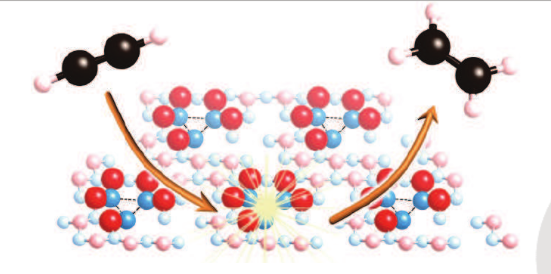We have discovered that indium oxide catalyzes acetylene hydrogenation with high selectivity to ethylene (85%) even in large excess of the alkene. In situ characterization evidences the formation of oxygen vacancies under reaction conditions, while an in depth theoretical analysis links the surface reduction with the creation of well-defined vacancies and surrounding In3O5 ensembles, which are considered responsible for this outstanding catalytic function. This behavior, which differs from that of other common reducible oxides, is due to the presence of four crystallographically inequivalent oxygen sites on the indium oxide surface. These resulting ensembles are (i) stable against deactivation, (ii) homogeneously and densely distributed, and (iii) spatially isolated and confined against transport, broadening the scope of oxides in hydrogenation catalysis.
